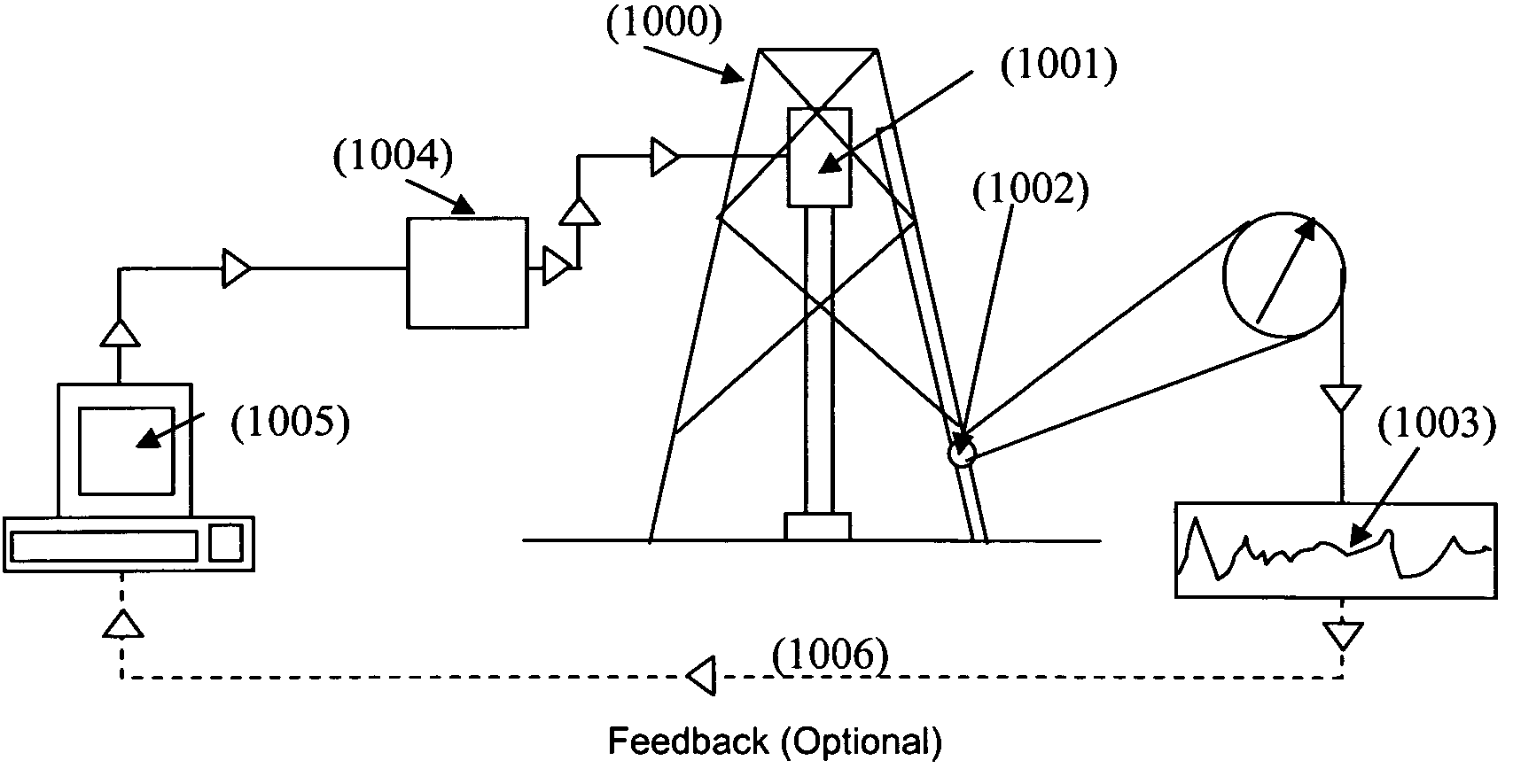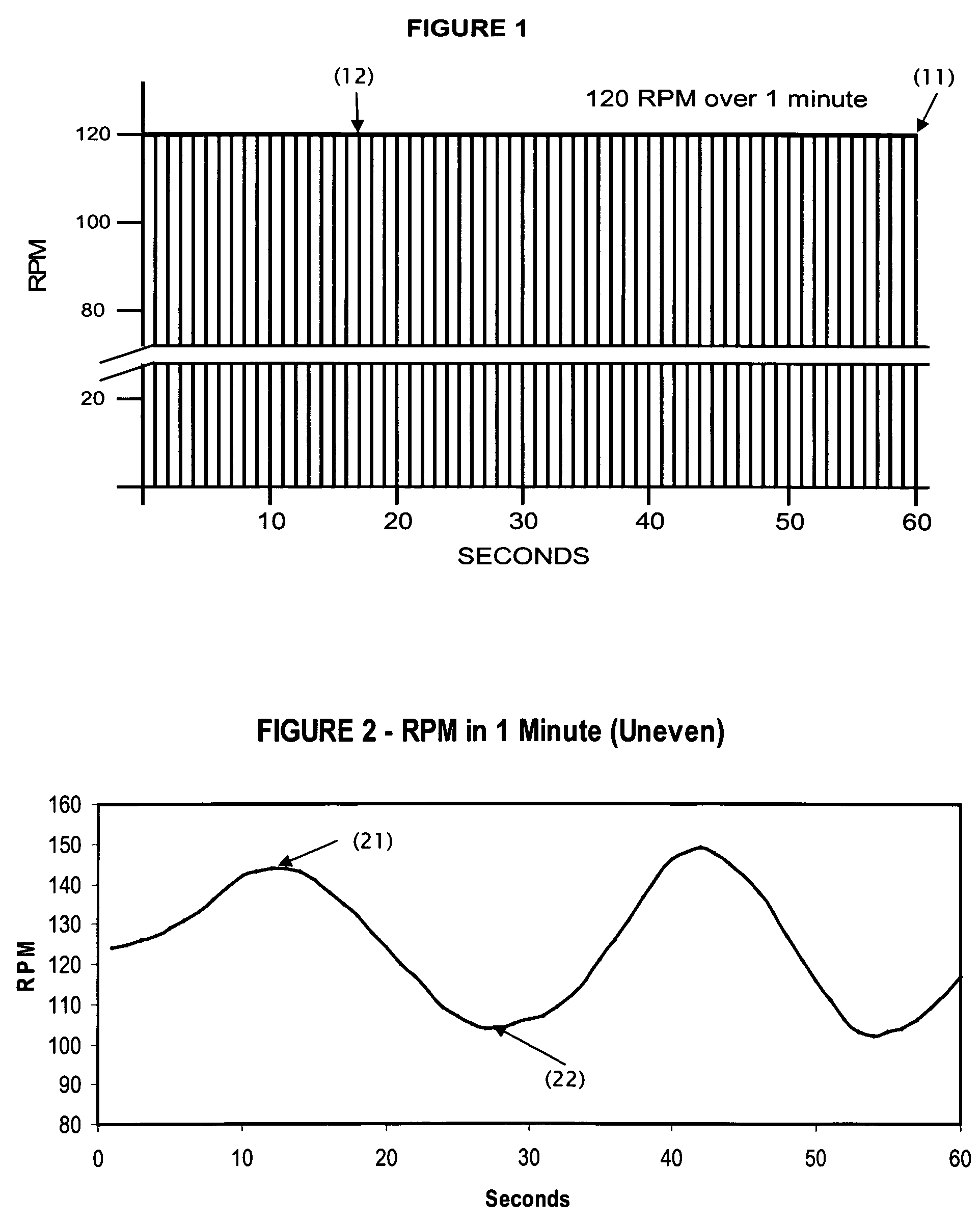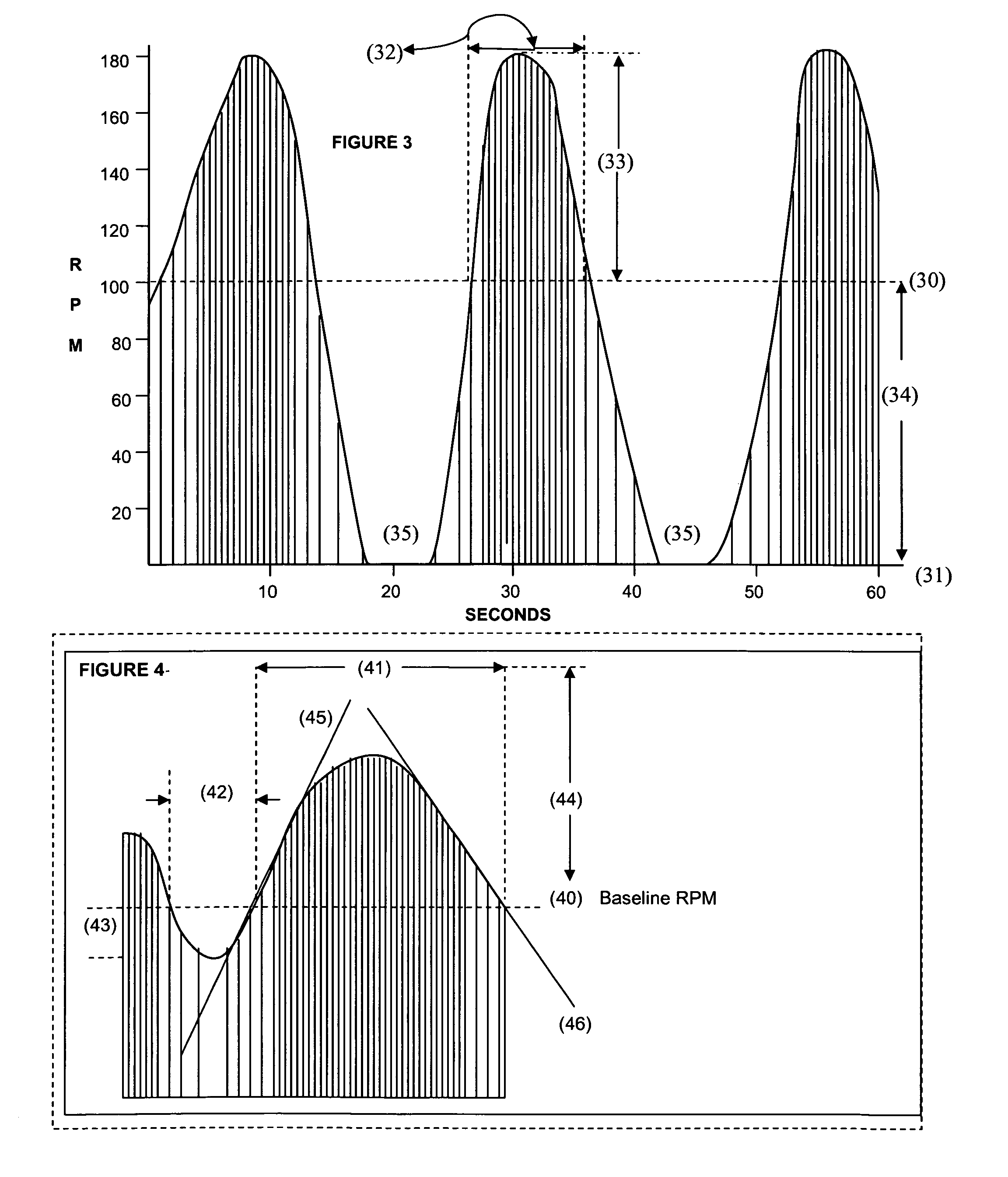Adaptive apparatus, system and method for communicating with a downhole device
a technology of adaptable equipment and downhole devices, applied in the field of adaptable equipment and system of communication with downhole tool assemblies, can solve the problems of compromising the efficiency of drilling operation, affecting the drilling process, so as to achieve less disruption to the drilling process, the effect of avoiding and reducing the weight of the bi
- Summary
- Abstract
- Description
- Claims
- Application Information
AI Technical Summary
Benefits of technology
Problems solved by technology
Method used
Image
Examples
Embodiment Construction
[0058]In one embodiment the device constitutes a surface computer equipped with an interface to the drilling rig rotary drive which contains information for encryption and transmission to the downhole instrumentation package. Any downhole device which is to receive information is equipped with a similar decryption program protocol to facilitate effective transfer of information between the surface location and the downhole device or devices. The surface computer monitors the existing baseline drillstring rotational speed in order to establish a datum from which to modulate the rotational frequency in order to encode the information to be transmitted. The program variables' sophistication, including timing and ΔRPM offsets are variable and adaptive, depending on the application, information to be transmitted and specific well environment and requirements. The surface computer is equipped with a real time clock interface which during program sequencing causes the mechanical interface ...
PUM
 Login to View More
Login to View More Abstract
Description
Claims
Application Information
 Login to View More
Login to View More - R&D
- Intellectual Property
- Life Sciences
- Materials
- Tech Scout
- Unparalleled Data Quality
- Higher Quality Content
- 60% Fewer Hallucinations
Browse by: Latest US Patents, China's latest patents, Technical Efficacy Thesaurus, Application Domain, Technology Topic, Popular Technical Reports.
© 2025 PatSnap. All rights reserved.Legal|Privacy policy|Modern Slavery Act Transparency Statement|Sitemap|About US| Contact US: help@patsnap.com



